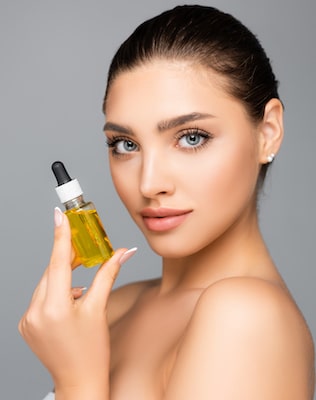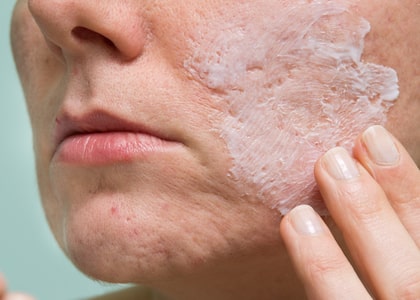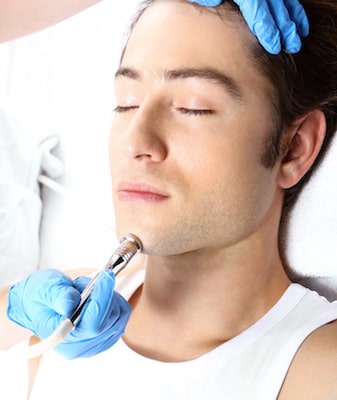While it is known that vitamin E assists in moisturizing the skin, research also shows that vitamin E oils and supplements have little to no effect on scars. Vitamin E’s extensive range of benefits includes maintaining both the health of the eyes as well as strengthening the immune system of the body. There is a common belief that vitamin E will help reduce the appearance of scars but there isn’t much evidence to prove this belief is accurate.
What is Vitamin E?
Vitamin E consists of a group of fat-soluble compounds with antioxidant effects. Antioxidants will protect cells from the effects of free radicals as they are known to damage cells and contribute to the progression of both cardiovascular disease and cancer. Vitamin E can exist naturally in some foods while some manufacturers are also known to add it to other foods. The most naturally-occurring sources of vitamin E include, but are not limited to, nuts, spinach, whole grains, olive oil, and sunflower oil. In other instances, the vitamin is available as an oral supplement or as oil that people can apply to the skin.
Vitamin E and Treating Scars
 When treating burns and scars, vitamin E is often a very popular option. However, there have been multiple studies conducted to prove the validity of that use and unfortunately the results have been disappointing in some cases.
When treating burns and scars, vitamin E is often a very popular option. However, there have been multiple studies conducted to prove the validity of that use and unfortunately the results have been disappointing in some cases.
In a study from 1999 that looked at the effects vitamin E had on scarring, it was actually shown that one-third of those studied actually had allergic reactions to it. In fact, 90% of the people reported that they either had an allergic reaction to the vitamin E or there were no visible effects on their scarring. It was proven that vitamin E does help other skin conditions such as atopic dermatitis AKA eczema. As of today, there isn’t much information available to prove that vitamin E will help diminish scars. Plus, a 2016 review concluded that there has to be more research conducted to come to a conclusion on the matter.
Vitamin E and the Skin
While vitamin E’s assistance in reducing the appearance of scars may seem questionable, one fact out of these studies concludes that moisturizing the skin during the process where the wound is healing will definitely help. If the person isn’t allergic to vitamin E, they can use moisturizers that contain the vitamin. This still discounts the effects of vitamin E’s presence in moisturizers but the act of moisturizing the skin is still beneficial. If someone wants to use vitamin E oil or take the supplements, it is suggested that they speak to a healthcare provider.
Alternatives to Vitamin E
Hydrogel (also known as silicone gel) adhesive dressings are an option to apply over, and flatten, scars. The silicone helps to hydrate the scar and slow down the production of collagen fibers. In doing so, the scars will begin to come in flatter, softer and paler than usual.
In the United Kingdom, the National Health Service (NHS) has suggested applying the silicone sheets for 12 hours a day for three months. A treatment that many choose is a scar massage which is said to soften the scar while helping reduce pain, itching and sensitivity. Be sure and massage, for five minutes at a time, 3-4 times throughout the day. Trusting a scar specialist will ensure proper advice on the best technique to use on a particular scar.
A dermarolling procedure involves rolling tiny needles over the surface of the skin. There are people who think that by puncturing the skin and creating injuries, the skin will heal itself and improve the appearance of scars. In a clinical trial done on dermarolling, it was found, after three treatments, there was a visible improvement of the scars. There have been a few participants that reported instances of pain from the procedure so consult with a dermatologist before having the procedure.
Other procedures that may reduce the appearance of scars include:
- Laser therapy which requires the use of light to target blood vessels that make scars appear inflamed. According to the NHS, the procedure will also boost collagen production and reduce pitting. However, there aren’t many long-term studies on the effectiveness of laser therapy.
- Dermal fillers are placed in the body in order to plump the skin. This can reduce the appearance of pitted scars but it isn’t a long term treatment as the results are not permanent.
- Cryotherapy freezes keloid scars in order to prevent them from growing or spreading. It also flattens the appearance of the scars. This procedure uses liquid nitrogen and can lighten the skin in the area.
The time it takes for a scar to fade on the skin can vary and depends on the initial size and depth of the injury. According to the NHS, scars from injuries such as cuts or surgical incisions usually takes up to two years to flatten before they begin to fade. Hypertrophic scars can continue to thicken for six months before they start the process of fading for the next few years.
Vitamin E and Scar Treatment – Is it Worth It?
There is not much clinical evidence that proves that vitamin E oil or supplements can help reduce the appearance of scars. However, there is good evidence to support the fact that the positive effects people notice from vitamin E can be the result of moisturizing or massaging the scar and not the vitamin E itself. Patients might be better of considering other scar treatments like silicone sheets, massages and dermarolling.

 The use of home remedies for scars can help to reduce the appearance of the scars located on the body. In general, home remedies are ideal for treating new scars or scars that are relatively minor in their appearance. If a scar on the body is older, or considered to be extensive in its appearance, it is best to visit a doctor to discuss medical cosmetic treatment options instead of home remedies.
The use of home remedies for scars can help to reduce the appearance of the scars located on the body. In general, home remedies are ideal for treating new scars or scars that are relatively minor in their appearance. If a scar on the body is older, or considered to be extensive in its appearance, it is best to visit a doctor to discuss medical cosmetic treatment options instead of home remedies. Older scars that tend to be more visible might only respond to medical or cosmetic treatments of the scars. Here are some examples of the most effective medical and cosmetic scar treatments:
Older scars that tend to be more visible might only respond to medical or cosmetic treatments of the scars. Here are some examples of the most effective medical and cosmetic scar treatments: